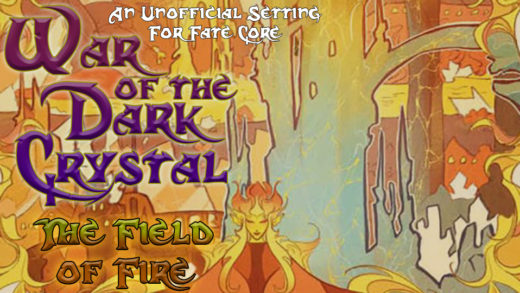Thanksgiving is celebrated in the US this week and that keeps my mind focused on two things: eat and drink. Food is often taken for granted in games, with most races able to share from the same plate. But would that really be the case?
Light vs Dense Eating
Fantasy and sci-fi races may not always have the same palette or appetite as humans. Despite how they’re treated in Tolkien, D&D, etc., it seems more likely that elvish cuisine is light an airy, something that would not easily sate human stomach without magic. Lembas bread, without enchantment, would be like eating a handful of crackers to humans. In that same manner, elves would only need to take a few bites out of human food to feel full and even our simpler fare would seem overly-rich.
In a similar manner, Dwarven food and drink would be completely unpalatable to the elves, and, to humans their food would be concentrated both in flavor and in form. Dwarves would find most human food to be too light and would over-eat in order to feel full.
Meanwhile, orcs may eat food of a similar style to humans but would make everything spicy. Dragonborn would only eat meat cooked well done or to the point of gristle. Tabaxi, also, would only eat meat but could only have it rare or raw.
The density and flavor-packing or spicing of foods required for different races provides additional challenges, especially when eating in mixed company. Granted, it would still be easiest for the orcs… so long as they had hot sauce.
Unusual Human Cuisine
Often overlooked in gaming is how culture itself creates food outliers. Often this is driven by necessity. In Ghana, eating insects account for up to 60 percent of dietary protein in the rural African diet [source]. Other times, status and technology leads to dishes that may seem strange, such as the abundance of gelatin/aspic recipes of the 50’s and 60’s, to show off the status of owning a refrigerator and to minimize clean-up and food waste in an unsteady economy.
One not need travel to the past or a distant country to be surprised by food; even a neighbor’s cuisine may be thought of as odd. Many Brits still find their northern Scottish neighbor’s dish of haggis as weird. (Humorous aside: in 2010 18% of Brits surveyed thought that haggis was a distinct animal.) For those in the US, a Midwesterner may find the concept of Koolickles (pickles brined in the various flavors of Kool-Aid powder) of Mississippi almost stranger or alien.
In many games, the PCs travel. As they do, have them come across unique regional cuisines. How their character treats new food is an important aspect to their personality and may encourage role-play even when said characters have returned to their normal diet.
The Truly Alien and Inedible
In the computer game Mass Effect two of the races can only eat food that is dextro amino acid-based, as opposed to the more common/human levo amino acid-based food. While this uses some artistic license (as humans could eat dextro amino acids), it is worthwhile to consider that not all creatures across the variety of space could share meals, with some ingredients that may be poisonous to others. Like airy vs dense foods but with the added challenge of ensuring no one gets sick or dies at the table. Save that for combat; like a food fight.
For a less dangerous method of introducing alien food, the obvious ploy is for the meal to be alive, small, and wriggling out of the bowl (or running down the table). And eating food while it’s alive can seem alien, but consider other options, such as the alien race needing to feast on food that was recently running, so instead of a table, they would have a field to chase gazelle-like creatures. Or aliens that eat decomposing carrion. For added incongruity, what if the carrion-feeders were some of the most beautiful and charismatic of the aliens?
Other alien options may not center on the meal as much as their eating habits. Some eaters include creatures that feel the taste of the food isn’t as important as the act of foraging and finding it. Other aliens may feel that eating is not a communal, but solitary and private act. Some beings may absorb or dissolve their food; and while one race may prefer liquid foods for that act, others may only want the densest of nourishment. And, of course, there are the complete omnivores who may have difficulty distinguishing between prepared food, utensils, tableware, chairs, etc.
Utensils and Tableware
This was touched on in the prior section, but what various races and cultures eat with is almost as important as what they eat. Even the more common fork, knife, and spoon have variants across cultures. In more formal environments, choosing the proper eating implement is a sign of social graces and not all cultures may be as obvious in their etiquette as choosing implements from the “outside in.” If wanting to introduce strange, but still familiar, flatware to your game, consider utilizing some of the rarer combination utensils such as the splayd or the spife.
Also to be noted is the tableware, glassware, and the construction materials of all the cookery. The availability of refrigeration and heat will also affect the types of meals that can be made. Unusual cooking may also be borne of necessity, such as cooking on a clothes iron as if it were a hotplate.
Resources
While writing this article I found myself referencing TV Tropes and Wikipedia. But here are some other links I came across that I may not have used directly, but could be beneficial when thinking about food in your game.


Recent Comments